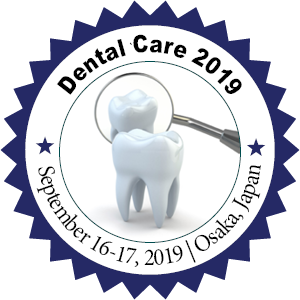Abdul Rahman Khan
Aga Khan University Hospital Pakistan
Title: Comparison of the Outcomes of Different class II Treatments Protocols using ABO-OGS, PAR Index and IOTN
Biography
Biography: Abdul Rahman Khan
Abstract
Introduction
Various treatment modalities are used to treat skeletal class II malocclusion. Treatment success should be evaluated to ensure that each case is finished ideally. Therefore, this study was aimed to compare the outcomes of different skeletal class II treatment modalities.
Materials and Methods
A cross-sectional study was conducted using pretreatment and post-treatment dental casts, photographs, and radiographs of 135 subjects equally divided into Clark’s Twin Block (CTB), upper first premolars’ extraction (UPE), and class II elastics (C2E) treatment modalities. The post-treatment casts and radiographs were scored according to American Board of Orthodontics-Objective Grading System (ABO-OGS). Peer Assessment Rating (PAR) Index and Index of Orthodontic Treatment Need (IOTN) were assessed using pretreatment and post-treatment casts. Wilcoxon-Signed Rank test was used to compare the pretreatment and post-treatment malocclusion scores. Mann-Whitney U test and Kruskal-Wallis test were used to compare the scores among different treatment modalities. Level of significance was kept at p ≤ 0.05.
Results
The ABO index indicated that cases treated with C2E had the greatest incidence of treatment failure (40%) followed by CTB (33.3%), and UPE (20%). The changes in the PAR scores indicated a significant (p < 0.001) improvement for CTB (93.2%), UPE (90%), and C2E treatment (87.2%). Similarly, changes in the pretreatment and post-treatment IOTN-DHC and IOTN-AC scores were significant (p ≤ 0.001) for all the treatment modalities.
Conclusions
All class II treatment modalities show significant changes after orthodontic therapy using different indices. However, treatment with C2E has shown less improvement than the others..

